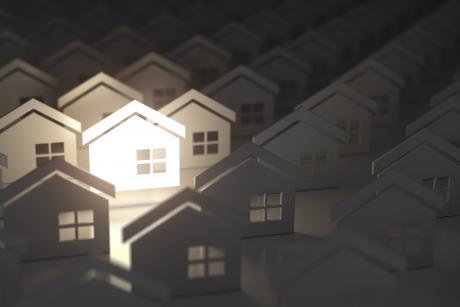Abstract
Older Americans want to age in place, but often live in older, larger homes, which can be unsafe or expensive to maintain, and, if located in rural areas, lack easy access to transportation, medical and social services. Many older adults could better meet their needs by moving. This article shares data on housing characteristics common to older adults, outlines key issues they face, and explores policies to mitigate them. We recommend responsibly using home equity to finance home modifications, improving local amenities, and expanding housing types, including with sustainable rentals.
Key Words:
aging, older adult housing, aging in place, retirement
The U.S. population is aging rapidly. The share of older adults ages 55 and older increased from 21 percent of the population in 2000 to 29 percent in 2017. By 2040 it is expected to reach 33 percent, which is an increase of 30 million elders (Choi et al., 2019). This shift will affect the future housing preferences and needs of older Americans. Elders’ housing situation, living arrangements, location, cost, and mobility are consequential for their financial, emotional, social, and physical well-being. Some older adults will age in place, while others might downsize to a nearby location or move farther afield. These choices made by older adults will influence the location, price point, size, age, and type of housing that is available to younger adults starting families and looking to buy their first home.
Older Americans overwhelmingly want to age in place (Munnell, Soto, and Aubry, 2007; Venti and Wise, 2004). About two-thirds of respondents in a Fannie Mae survey (2016) of older adults ages 55 and older replied “never” when asked “When Do You Expect to Move Next?” A Freddie Mac survey (2016) and an AARP survey (2018) revealed the same about older adults’ strong desire to age in place.
The desire to age in place is backed by strong evidence showing that the large Baby Boomer Generation is not reducing its housing consumption by moving to smaller or less expensive homes, or by becoming renters, even though many are retiring or experiencing life changes that might precipitate such downsizing (Zhu and McManus, 2018.) The percentage of baby boomers living in detached single-family homes increased slightly from 2006 to 2012, even though the percentage of baby boomer households with at least one child declined over the same period (Simmons, 2014). This trend holds true for older boomers born between 1946 and 1955, who are unlikely to have young children in the home and who have retired in substantial numbers.
The desire to age in place is understandable. It allows older adults to live in a familiar home and neighborhood, in proximity to friends and relatives, with nearby trusted providers such as doctors, hospitals, religious services, recreation, and opportunities for social interaction. Aging in place also may be economical, as it helps avoid costs associated with the buying and selling of homes and with moving.
Despite these benefits, aging in place may not be the right decision for everyone. Data show that many older adults live in homes and geographies that may not meet their needs.
Current Living Arrangements of Older Adults
Older adults are more likely than younger adults to live in homes that, in many respects, may not be conducive for living as an older person. Figure 1 shows that more than 70 percent of individuals ages 55 and older live in houses built before 1990 (i.e., more than 30 years old.); and around 40 percent of older adults live in homes build before 1970 (i.e., more than 50 years old). In comparison, younger populations are more likely to live in more newly constructed homes. Thus, aging in place can mean living in an older home in poor or below average condition and in need of above-average levels of maintenance and repair. Some might even be unsafe. Older homes also may be less likely to have accessible features, which can affect in-home comfort.
Figure 1: Year the House Was Built, by Homeowner Age
Source: 2017 American Community Survey
Data also show that a substantial majority of older adults live in homes with three or more bedrooms (see Figure 2, below): More than two thirds, or 67 percent of older adults ages 55 to 64, live in homes with three or more bedrooms. While the share drops slightly for older age groups (to 65 percent for ages 65 to 74, and to 58 percent for ages 75 and older), the numbers are still quite high.
Figure 2: Number of Bedrooms Per House, by Homeowner Age
Source: 2017 American Community Survey
Older adults are more likely than younger adults to live in rural areas. As per Figure 3 (below), more than 20 percent of all elders ages 55 and older live in rural areas, which is higher than the 15 to 17 percent for those younger than age 55. And, for the ages-65-and-older age group, the percent living in rural areas exceeds the percent in urban cores; this is not the case in any of the younger age groups.
Figure 3: Housing Location by Age Group
Source: 2017 American Community Survey
The value of homes occupied by older adults tends to be at the lower end, perhaps reflecting an older, more rural housing stock. Twenty-three percent of people ages 75 and older live in houses that are worth less than $100,000, according to the 2017 American Community Survey. An additional 29 percent live in homes valued between $100,000 and $200,000. However, affordable living in rural areas may come with its own set of challenges—inadequate access to primary care doctors, in-home care, and hospitals, lack of transportation, limited opportunities for social interaction, and higher risk of loneliness.
Finally, we look at the share of older adults living alone, by age. This share decreases between ages 25–34 and 35–44, as people graduate from school and form households, but increases later in life. In 2017, 38 percent of individuals ages 75 and older lived alone. A greater number of older adults might live alone later in life as their life expectancy increases, or for other reasons, such as divorce or having never been married. If current trends persist, the number of individuals ages 75 and older living alone will more than double from 8.1 million in 2017 to 17.3 million in 2040. Because older adults are more likely to face declines in physical mobility, cognitive impairment, and health, the increase in the number of elders living alone necessitates appropriate housing options to support physical and emotional well-being.
How Do Housing Characteristics Impact Aging in Place?
Above data show that many older adults are living in homes that may be too large for their needs or located in rural areas with limited services; other older adults are living in much older homes that are in need of above average maintenance and repair expenditure. This points to a mismatch between the characteristics of a home and the needs of its inhabitants, as well as an economic conundrum where someone on a fixed income may not have the financial resources for costly housing repairs. This doesn’t necessarily imply moving or downsizing—newer homes in sought-after neighborhoods near amenities are often much more expensive. Rather it implies finding a place that balances aging in place with other considerations such as:
- Housing affordability;
- Access to doctors, hospitals, and in-home care;
- Transportation options;
- Proximity to family and friends; and
- Access to community centers, senior centers, shopping, and entertainment
Every household will weigh these factors differently, but the eventual decision will have a profound impact on financial, social, emotional, and health outcomes. Living in a very old house that requires expensive repairs could eat into limited retirement savings, leaving the household’s financial situation less sound. Similarly, living with a serious medical condition in a remote location may prove to be highly detrimental to health. Data from 2017 American Community Survey show that health becomes an important reason for moving for more than a quarter of movers ages 75 and older, likely reflecting deteriorating health. Aging in the wrong place—or even waiting too long to move—can lead to poor outcomes relative to moving out earlier to a more appropriate home and-or a different location.
Of course, moving requires selling and buying or renting another home, which has its own challenges. This is especially true for homes located in rural areas, which are older and more likely to be occupied by elders. Away from job centers, rural homes are likely to attract limited demand from those still in the workforce. Working households tend to prefer locations with good schools that are closer to job centers. Limited demand is one likely reason why rural homes have lower values. Second, even if older homeowners were to sell their home, the proceeds may be insufficient to afford another home in a desired location, especially considering the transaction costs of buying and selling (i.e., real estate commissions, closing costs and transfer taxes, which add up to thousands of dollars or more), plus the costs of moving. Lastly, older adults in poor health may not have the physical capacity to undertake the process of selling, buying, and moving.
How To Help Elders Age in the Right Place?
Clearly, there is a disconnect between the widespread desire to age in place and the pitfalls associated with remaining in the wrong home. This has important implications for policymakers and practitioners. Older adults should be able to age in place with relative ease when it is the right place for them. In many cases, this will require home modification and repair. When staying in the home is not advisable, elders should also be able to transition to another type of housing. We offer three recommendations:
Home modification and repair financing: Older homes need modifications to improve accessibility, safety, and mobility. Among other negative impacts, inaccessible homes can increase elders’ risk of falling. According to Eriksen, et al. (2015), annually, 3 million Americans ages 65 and older are treated for falls. These accidents result in 800,000 hospitalizations costing $55 billion per year, a large portion of which is incurred by Medicare. According to the Harvard Joint Center for Housing Studies (JCHS, 2018), older houses rarely have features that improve accessibility and mobility. For example, houses built after 2000, compared to houses built prior to 1940 are five times more likely to have lever handles, and twice as likely to have extra-wide hallways and no-step entryways. Creating new financing options, potentially backed by home equity, could help older adults make necessary home modifications.
Two types of products allow homeowners to extract equity from their homes:
- Home equity lending products allow households to borrow against the equity in the home. The loan is repaid via monthly payments.
- Reverse mortgage products allow households to borrow against their homes without making monthly payments. The principal and interest are due when the house is sold, the surviving spouse dies, or the borrower fails to keep up with the mortgage terms, which include payment of property taxes and homeowner insurance premiums. The most common reverse mortgage is called the Home Equity Conversion Mortgage (HECM), which is government-insured by the Federal Housing Administration (FHA).
Note that using home equity is less likely to work for older adults who have low-value homes. Home equity loans tend to be more popular among homeowners with higher credit profiles, while HECMs are more common among older homeowners who have lower-incomes and fewer credit options because they typically have very limited means for making monthly payments. For individuals who can make monthly payments, extracting some equity can help pay for critical home repairs, or for installing elder-friendly equipment such as stair lifts, ramps, and grab bars, or other home modifications.
What could be done to make it easier for older adults with less equity to extract some of it? One option is to modify the HECM program by charging a lower premium for loans that are smaller in relation to the property value, as these are lower risk loans for the FHA (Goodman, 2019.) Currently, HECM premiums don’t depend upon amount borrowed in relation to the property value. In addition, policies that improve financial literacy of home equity extraction among elders (for instance, through counseling) may enable them to improve the quality of life in their existing homes.
Neighborhood and community development: The availability of needed services and amenities outside the home is equally important to aging in place. Surveys find that older adults have a strong preference for livable and walkable neighborhoods in vibrant communities (Sisson, 2018). Valuable services include health and wellness management, transportation options, grocery shopping, and options for socialization and entertainment to prevent social isolation. In remote areas, telemedicine is likely to be important as well. The more our senior housing policies can encourage the development and preservation of such services and facilities, the less likely it is that elders will need to move out for those reasons. Local governments can play a big role here by planning and seeking funding for services and amenities valued by elders.
Provide better variety of senior housing options: Current zoning and land-use regulations increase construction costs and limit the types of properties that can be built in localities around the nation. Demand for multigenerational housing, especially as older parents move in with adult children, as well as for nursing homes and assisted living facilities will grow as the older adult population increases. As there is likely to be a significant increase in the number of elders living alone, zoning and land-use regulations (which favor single-family construction on large lots) need to be revised to encourage the construction of smaller homes, accessory dwelling units (ADUs), and multifamily housing.
ADUs are a relatively inexpensive way of increasing affordable housing, but construction is often held back by stringent requirements such as square footage, owner-occupancy, and parking spaces. Reducing these barriers can spur ADU construction on existing single-family lots for older adults looking to downsize, either as owners or renters. For elders already living in a single-family home, adding an ADU rental could be a source of retirement income, as well as a way to combat loneliness through better socialization (see more on ADUs in the Ball and Lawler article in this issue).
Conclusion
Even though most older adults would like to age in place, our analysis suggests that over the long run, aging in the right place may be more advantageous from a financial and health perspective. But finding the right place and having the financial resources to afford it has its own challenges. Some of these can be mitigated by more efficient financing programs; others will require changing the type of housing that is built and the location where it is built to better meet the needs of older adults now and into the future.
Karan Kaul, M.B.A., is a senior research associate, and Laurie S. Goodman, Ph.D., and Alanna McCargo, M.B.A., are vice presidents at the Housing Finance Policy Center, Urban Institute, in Washington, DC.
References
Binette, J., and Vashold, K. 2018. 2018 Home and Community Preferences Survey: A National Survey of Adults Age 18-Plus. AARP Research. tinyurl.com/ybx3w3xq. Retrieved April 28, 2020.
Choi, et al. 2019. “Senior Housing and Mobility: Recent Trends and Implications for the Housing Market.” Urban Institute. tinyurl.com/y8hd4dnf. Retrieved April 28, 2020.
Eriksen, et al. 2015. “Home Safety, Accessibility, and Elderly Health: Evidence From Falls.” Journal of Urban Economics 87: 14–24.
Fannie Mae. 2016. Older Homeowners: Accessing Home Equity in Retirement. tinyurl.com/y8pp79tm. Retrieved April 28, 2020.
Freddie Mac. 2016. Fun After Fifty. tinyurl.com/yc8rqz7r. Retrieved April 28, 2020.
Goodman, Laurie S. 2019. “Statement by Laurie Goodman on Home Equity Conversion Mortgage Program.” The Urban Institute. tinyurl.com/y8olp7ya. Retrieved April 29, 2020.
Harvard Joint Center for Housing Studies. 2018. “Housing America’s Older Adults 2018.” tinyurl.com/y5w925nd. Retrieved April 30, 2020.
Munnell, A. H., Soto, M., and Aubry, J.-P. 2007. “Do People Plan to Tap Their Home Equity in Retirement?” Chestnut Hill, MA: Center for Retirement Research at Boston College.
Simmons, P. 2014. “Are Baby Boomers Abandoning the Single-Family Nest?” Fannie Mae Housing Insights 4(3): 1–6.
Sisson, Patrick “Senior Housing: Older Americans Face Affordability, Accessibility Challenges.” Curbed, Nov. 14, 2018. tinyurl.com/yawn3r4o. Retrieved April 29, 2020.
Venti, S. F., and Wise, D. A. 2004. “Aging and Housing Equity: Another Look.” In D. A. Wise, ed., Perspectives on the Economics of Aging. Chicago: University of Chicago Press.
Zhu, L., and McManus, D. 2019. “While Seniors Age in Place, Millennials Wait Longer and May Pay More for their First Homes.” Freddie Mac Economic & Housing Research Insight. tinyurl.com/ydb4k4tc. Retrieved April 28, 2020.





